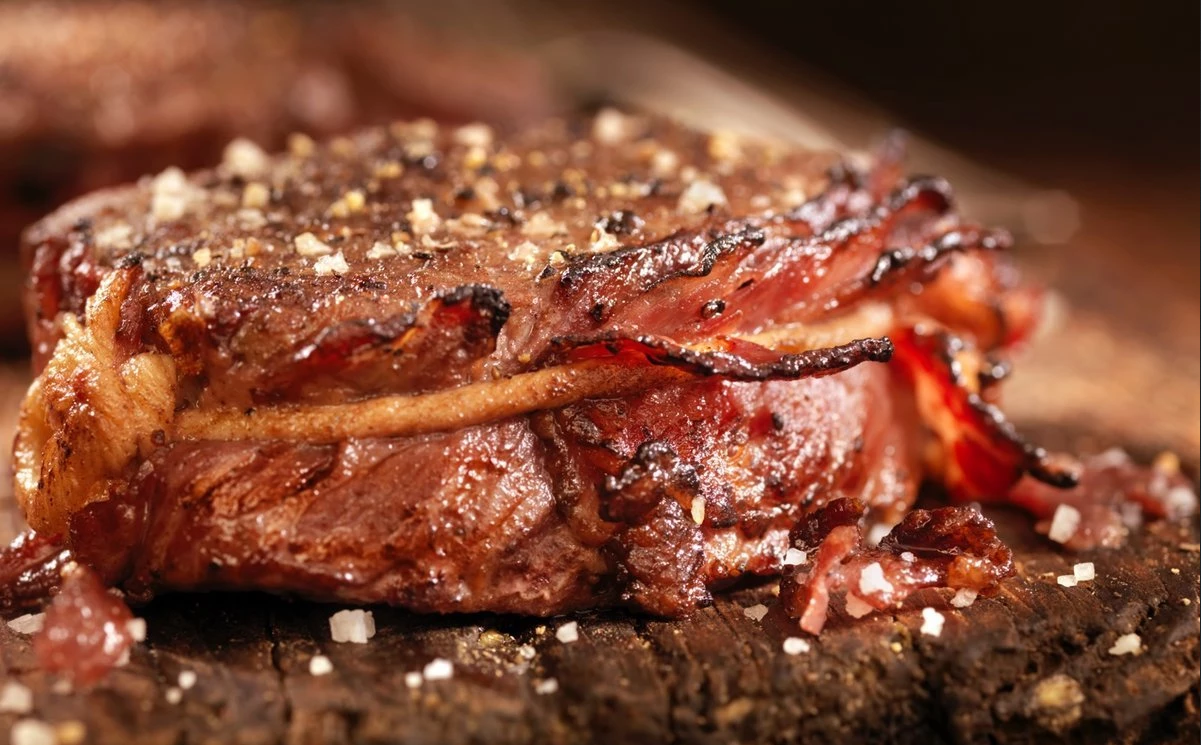Michelle Wheeler
particle.scitech.org.au
Michelle is a former science and environment reporter for The West Australian. Her work has seen her visit a snake-infested island dubbed the most dangerous in the world, test great white shark detectors in a tinny and meet isolated tribes in the Malaysian jungle. Michelle was a finalist for the Best Freelance Journalist at the 2020 WA Media Awards.
Before you throw a hunk of meat on the barbie this summer, read our guide to the perfect steak.
Buy meat with some marbling, start with a hot barbecue and make technology your secret weapon.
These are some of the top tips from Murdoch University Lecturer in Animal Production and Science Dr Liselotte Pannier for cooking the perfect steak this summer.
Liselotte is an expert in meat eating quality and is part of the meat science team developing a cuts-based Meat Standards Australia (MSA) grading system for sheep meat.
She shared some of her secrets for buying and cooking the perfect steak with Particle.
THE BUTCHER’S COUNTER
Let’s start with choosing your steak.
Liselotte says if there’s one trait you can look for when shopping, it’s a bit of marbling. Marbling is the white flecks of fat within the meat.
“But of course different consumers prefer different levels of marbling, and this comes down to that personal preference,” she says.
Look for a good butcher or supermarket that sells MSA graded beef, Liselotte says.
But don’t worry too much about the colour of the meat.
Liselotte says that, while many consumers look for that bright red cherry colour to their meat, colour generally doesn’t affect how good a steak is to eat.
“Even discounted slightly brown meat is OK,” she says.
RAISE THE STEAKS
When you cook steak, the proteins within the meat denature or change shape. The lipid or fat components also melt.
Different proteins will denature at different temperatures during this cooking process, and this change in protein shape gives a different texture to your meat.
Liselotte says the flavour that develops when steak is cooking is also down to the thermally induced Maillard reaction, during which flavour compounds are produced.
This creates the ‘meaty’ taste and also browns the steak.
The Maillard reaction only occurs at high temperatures though—so it’s important to make sure your barbecue is hot before you start cooking.
A HELPING HAND
If all this seems a bit much for a backyard barbie, help is at hand.
Liselotte recommends using technology, such as Meat and Livestock Australia’s SteakMate app to perfect the timing and cooking of your steak.
The app allows you to select the cut of meat you’re cooking, how thick it is, how you like your meat and whether you’re cooking it on a barbecue, electric hotplate or gas stove.
(We tried Liselotte’s favourite cut—a scotch fillet. For a 1.5cm thick, medium rare steak on the barbecue, the app suggested a total of 7 minutes and 37 seconds cooking and resting time.)
If you’re feeding a crowd on Australia Day, the app also allows you to queue your steak orders for cooking one after another.
Drop a casual mention of the Maillard reaction, and you’ll look like a grilling pro.
This article was originally published on Particle. Read the original article.
Please share this article so that others can discover The BFD.

